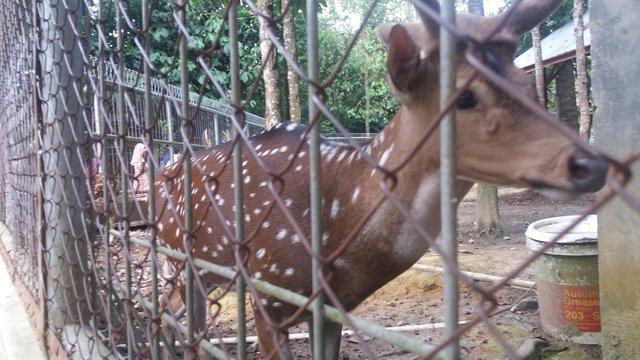
Deer live in a variety ofbiomes, ranging fromtundrato thetropical rainforest. While often associated with forests, many deer areecotonespecies that live in transitional areas between forests and thickets (for cover) and prairie and savanna (open space). The majority of large deer species inhabit temperate mixed deciduous forest, mountain mixed coniferous forest, tropical seasonal/dry forest, and savanna habitats around the world. Clearing open areas within forests to some extent may actually benefit deer populations by exposing theunderstoryand allowing the types of grasses, weeds, and herbs to grow that deer like to eat. Additionally, access to adjacent croplands may also benefit deer. However, adequate forest or brush cover must still be provided for populations to grow and thrive.Deer are widely distributed, with indigenous representatives in all continents except Antarctica and Australia, though Africa has only one native deer, theBarbary stag, a subspecies ofred deerthat is confined to theAtlas Mountainsin the northwest of the continent. However,fallow deerhave been introduced to South Africa. Small species ofbrocket deerandpudúsof Central and South America, andmuntjacsof Asia generally occupy dense forests and are less often seen in open spaces, with the possible exception of theIndian muntjac. There are also several species of deer that are highly specialized, and live almost exclusively in mountains, grasslands, swamps, and "wet" savannas, or riparian corridors surrounded by deserts. Some deer have a circumpolar distribution in both North America and Eurasia. Examples include thecaribouthat live in Arctic tundra and taiga (boreal forests) andmoosethat inhabittaigaand adjacent areas. Huemul deer (tarucaandChilean huemul) of South America'sAndesfill the ecological niches of theibexandwild goat, with the fawns behaving more like goat kids.The highest concentration of large deer species in temperate North America lies in theCanadian Rocky MountainandColumbia Mountainregions between Alberta and British Columbia where all five North American deer species (white-tailed deer,mule deer, caribou,elk, and moose) can be found. This region has several clusters of national parks includingMount Revelstoke National Park,Glacier National Park (Canada),Yoho National Park, andKootenay National Parkon the British Columbia side, andBanff National Park,Jasper National Park, andGlacier National Park (U.S.)on the Alberta and Montana sides. Mountain slope habitats vary from moist coniferous/mixed forested habitats to dry subalpine/pine forests with alpine meadows higher up. The foothills and river valleys betweenthe mountain ranges provide a mosaic of cropland and deciduous parklands. The rare woodland caribou have the most restricted range living at higher altitudes in the subalpine meadows andalpine tundraareas of some of themountain ranges. Elk and mule deer both migrate between the alpine meadows and lower coniferous forests and tend to be most commonin this region. Elk also inhabit river valley bottomlands, which they share with White-taileddeer. The White-tailed deer have recently expanded their range within the foothills and river valley bottoms of the Canadian Rockies owing to conversion of land to cropland and the clearing of coniferous forests allowing more deciduous vegetation to grow up the mountain slopes. They also live in the aspen parklands north of Calgary and Edmonton, where they share habitat with the moose. The adjacentGreat Plainsgrassland habitats are left to herds of elk,American bison, andpronghornantelope.
Hi! I am a robot. I just upvoted you! I found similar content that readers might be interested in:
https://kids.kiddle.co/Deer
Downvoting a post can decrease pending rewards and make it less visible. Common reasons:
Submit
Terima kasih telah memuji saya
Saya mohon maaf apabila ada hal yang serupa
Downvoting a post can decrease pending rewards and make it less visible. Common reasons:
Submit